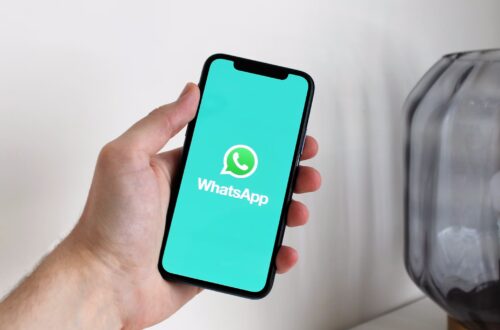Every WhatsApp AI deployment starts with excitement — automation, instant replies, scalability.
Then comes the question that makes every CTO pause: Is it actually working?
Tracking WhatsApp chatbot performance isn’t as simple as counting messages sent or customers reached. True ROI comes from what happens inside the conversation — context understanding, user retention, and conversion outcomes.
Let’s decode how modern enterprises measure WhatsApp AI success in 2025 — from the raw data layer to boardroom ROI metrics.
1. Why WhatsApp Analytics Matters More Than Ever
In 2023, most brands launched chatbots for coverage. In 2025, they’re refining them for profitability.
Here’s the shift in mindset:
- Old goal: “How many users did we respond to?”
- New goal: “How much did we save, convert, or retain?”
Forrester data shows that companies with conversational AI tied to analytics frameworks see:
- 32% higher conversion rates,
- 26% faster resolution times, and
- 18% reduction in human escalation costs.
The takeaway? Automation without measurement is guesswork.
Analytics transforms your WhatsApp bot from an expense into a performance engine.
2. Under the Hood: How WhatsApp Analytics Works
Technically speaking, every message flowing through the WhatsApp Business API generates a data trail.
These events are streamed in real-time — message receipts, delivery confirmations, user inputs, intents detected, and even session expirations.
In a typical setup, analytics pipelines look like this:
- Event Capture Layer – Collect raw events (message status, session start/end, API logs).
- Processing Engine – Structure events into interpretable categories (user, intent, sentiment).
- Aggregation Layer – Summarize KPIs across campaigns, workflows, or agents.
- Visualization Layer – Dashboards for marketing, support, and operations teams.
“We built our analytics stack on top of the WhatsApp API event stream, feeding it into BigQuery and Looker. That gave us intent-wise visibility for every region.”
— Daniel Weber, VP Engineering, Omniserv Global
From here, enterprises can monitor how the bot behaves (latency, error rate, intent accuracy) and how users respond (engagement, drop-offs, conversions).
3. The Four Pillars of WhatsApp Bot Performance
Think of WhatsApp analytics as a pyramid:
- Base: Operational metrics
- Middle: Interaction metrics
- Top: Business metrics
- Apex: ROI
Let’s break them down.
A. Operational Metrics — The Technical Backbone
These measure system reliability and scalability.
- Delivery Rate: % of messages successfully delivered. Benchmark: >98%.
- Response Latency: Average time between user input and bot reply. Ideal: <1.5 seconds.
- Uptime / Error Rate: Bot availability over 30 days. Goal: 99.9%+.
- Session Volume: Number of active conversations per hour.
If your delivery or latency dips, business metrics will inevitably follow.
Operational stability = user trust.
B. Interaction Metrics — Measuring Conversation Health
This is where analytics meets NLP.
Key parameters:
- Intent Recognition Accuracy: Correctly understood user queries ÷ total queries. Target: 85–95%.
- Engagement Rate: Users who interact beyond the first message.
- Drop-Off Rate: Sessions abandoned before completion.
- Re-Engagement Rate: Users returning within 7 days.
You can visualize this as a funnel — from greeting → engagement → conversion → retention.
Each drop-off point reveals design friction or intent misalignment.
C. Business Metrics — The Executive Dashboard
These numbers translate chat activity into measurable value.
- Lead Conversion Rate = Leads qualified ÷ Leads initiated.
- CSAT (Customer Satisfaction) from in-chat surveys.
- Containment Rate = Queries resolved by bot ÷ Total queries (ideal 70–85%).
- Cost per Interaction = Total cost ÷ Number of resolved conversations.
In financial services and e-commerce, these metrics correlate directly with sales funnel velocity and support deflection rates.
D. ROI Metrics — The Bottom-Line Calculation
This is where engineering meets economics.
The simplest ROI framework for WhatsApp AI looks like this: ROI=(Costmanual−CostAI)CostAI×100ROI = \frac{(Cost_{manual} – Cost_{AI})}{Cost_{AI}} \times 100ROI=CostAI(Costmanual−CostAI)×100
But the best teams add indirect benefits:
- Reduced average handling time (AHT)
- Increased agent productivity
- Customer retention due to faster response
Case in point:
A leading insurer in APAC reported saving $2.1M annually after integrating AI-driven WhatsApp support — not from reduced headcount, but from higher policy renewals due to faster responses.
4. Building the WhatsApp Analytics Stack
Let’s look at what a 2025-ready analytics architecture includes.
| Layer | Function | Example Tools |
|---|---|---|
| Data Ingestion | Capture real-time message logs, events | Webhooks, AWS Kinesis |
| Data Processing | Classify intents, detect errors, calculate metrics | Apache Beam, BigQuery |
| Storage | Store structured logs for reporting | Snowflake, MongoDB |
| Analytics & BI | Visualize KPIs and trends | Power BI, Looker, Metabase |
| Monitoring & Alerts | Detect anomalies (e.g., surge in drop-offs) | Grafana, Prometheus |
This stack allows both engineers and CX managers to work from the same dataset — different dashboards, one truth.
5. Advanced Metrics: Beyond the Basics
As conversational AI evolves, so does analytics.
Here are 2025’s advanced KPIs that separate mature systems from entry-level bots:
- Sentiment-Weighted CSAT: Blends user sentiment with post-chat feedback for emotional accuracy.
- Intent Drift Index: Tracks shifts in user intent over time (critical for product feedback loops).
- Fallback Recovery Rate: Measures how well the bot recovers from “Sorry, I didn’t understand.”
- Voice-to-Text Conversion Accuracy (if enabled): Key for voice message-based interactions.
- Template Efficiency: % of WhatsApp template messages leading to conversion within 3 messages.
These data points help teams refine models, retrain intents, and tune conversation flows with surgical precision.
6. Attribution Models: Connecting Analytics to ROI
This is where most companies stumble — connecting bot activity to revenue.
Three reliable models exist:
- Session Attribution: Credit conversions to sessions that initiated a sales action (like a demo booking).
- Journey Attribution: Track cumulative user interactions across multiple sessions or campaigns.
- Assisted Attribution: Split value between human and AI contributions in hybrid workflows.
Example:
If a WhatsApp bot qualifies a lead, and an agent closes it later, both share credit in ROI analysis.
“When we applied assisted attribution, we discovered 38% of sales originated with AI engagement, even if closed manually.”
— Priya Menon, Director of Analytics, CoreReach Fintech
7. Regional and Compliance Considerations
Analytics collection must comply with regional privacy laws:
- GDPR (Europe) – Explicit consent for data tracking.
- PDPA (Singapore) – Minimal data retention principle.
- DPDP Act (India) – User transparency for data profiling.
The best practice? Aggregate before storing.
Only retain anonymized metrics — never raw chat transcripts unless required for model retraining.
Enterprises increasingly use differential privacy in analytics pipelines — injecting statistical noise to protect identity without losing accuracy.
8. Visualization: Making Data Speak
Numbers don’t persuade — stories do.
Dashboards must answer three questions for stakeholders:
- How is the bot performing today?
- What changed from last week?
- What’s driving ROI movement?
Visualization tips:
- Use funnel charts for journey analysis.
- Heatmaps for intent accuracy.
- Trendlines for retention and conversion growth.
When analytics tell a clear narrative, even non-technical teams start driving decisions confidently.
9. Optimization Loop: Turning Insights into Action
Analytics is valuable only when it informs iteration.
A mature WhatsApp AI system runs a continuous optimization cycle:
- Collect: Capture user data and chat logs.
- Analyze: Identify weak intents, drop-off patterns, or high-value interactions.
- Act: Retrain NLP models or adjust flow.
- Evaluate: Measure post-update improvement.
Over 70% of enterprises using this “analytics-to-optimization” loop see measurable performance gains within 60 days.
10. The Future of WhatsApp Bot Analytics
By 2026, we’ll see AI bots tracking conversation quality in real-time using:
- Dynamic intent calibration (auto-correcting model drift)
- Predictive ROI modeling (estimating lifetime value per user session)
- Cross-channel integration (combining WhatsApp, web, and voice data)
The line between analytics and AI training will blur — bots will not only respond but learn from their own data.






